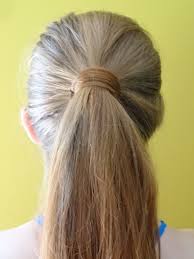Both men and women can encounter hair loss, the most widely recognized of which is called male or female pattern baldness, or androgenetic alopecia. Hair loss is entirely different than hair shedding (telogen effluvium) as well, which can happen in pretty much everybody sooner or later when the body experiences something awful, for example, a stressful occasion. In the long run, the hair will become back. With hair loss, this isn’t the situation; it’s changeless, influencing upwards of 70 percent of men and 40 percent of women in their lifetimes. Consequently, we’ll concentrate on androgenetic alopecia.
You may have become some thought of the reason for its name. Despite the fact that there are a number of environmental factors that may likewise play into a man’s risk, androgenetic alopecia is broadly accepted to be a hereditarily acquired condition as it “tends to group in families,” as per the National Organizations of Wellbeing (NIH). In particular, varieties in the alleged AR quality may build the movement of androgen receptors in the hair follicles, which react to androgens like dihydrotestosterone (DHT), a result of testosterone. DHT contracts hair follicles, however, making it troublesome for solid hair to live. What’s more, since it’s continually being made in testosterone-filled men, it’s much more inclined to influence them than women.
Despite the fact that it might appear as though there’s no ceasing hair loss — on the grounds that there truly isn’t — there are approaches to counteract it or back it off. Here are the major four.
-
Avoid exciting the hair follicles
While cornrows and different hairstyles that force the hair tight may look great, they can aggravate and scar the hair follicles, which at last murders solid hair. In individuals inclined to androgenetic alopecia, these sorts of hairstyles are particularly risky. Erroneously applying chemicals to the hair, for example, colors, bleaches, and straighteners can likewise cause harm.

Avoid exciting hair follicles
2. Get some FDA-affirmed medications.
You’ve likely known about Rogaine (minoxidil) sometime recently. While a few people may not trust it works, the drug can absolutely avert hair loss, and here and there reestablish hair development as well — the vast majority simply don’t know how to utilize it. The trap is to utilize it no less than twice every day for a half year. A few people may shed hair at first, yet inevitably it will work. Propecia, a doctor prescribed drug, squares testosterone from transforming into DHT, subsequently counteracting hair loss.

FDA approved medication can do wonders!
3. Change your diet
Hair needs appropriate nutrition to become sound — your health will depend on the type of food you eat all things considered. Ensure there’s a decent measure of iron, zinc, vitamin D, protein, omega-3 fatty acids, and biotin in your diet. Additionally, avoid the fatty browned foods and desserts; oil from the fricasseed sustenance may transform testosterone into DHT speedier through elevated oil-organ movement, while the sugar from desserts builds insulin levels, setting off the arrival of testosterone.

Change your diet!
4. Get surgery
A couple of surgeries exist, however as per Men’s Wellbeing, more men are picking one called follicular unit extraction (FUE) since it’s less obtrusive than different procedures. It includes joining hair follicle bunches from a contributor range on the individual’s scalp and afterward transplanting them to the balding region.

Hair weaving improves hair thickness
He said 50 percent of hair loss can happen before it’s even observable to the human eye. This implies making preventive strides is all the more essential in diminishing risk of hair loss.

